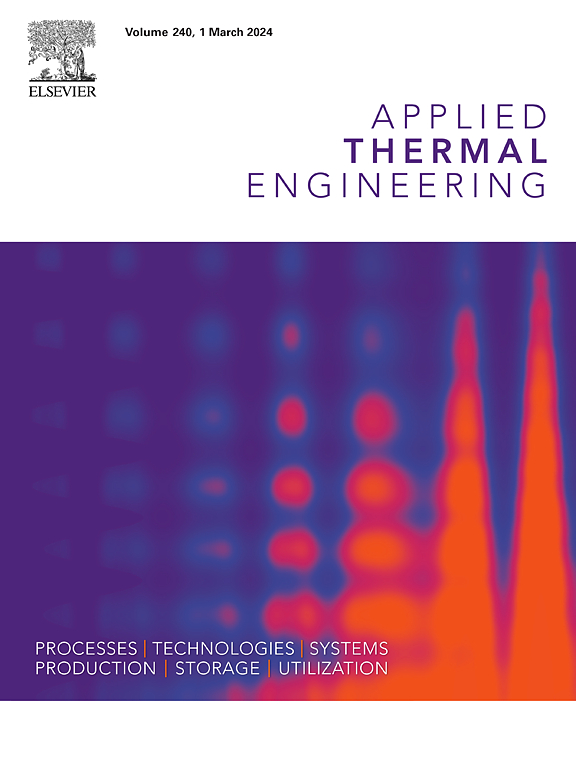Effect of surface temperature on splashing of droplets impacting on a cold superhydrophobic surface
IF 6.1
2区 工程技术
Q2 ENERGY & FUELS
引用次数: 0
Abstract
Droplet splashing on a solid surface is ubiquitous in many industrial applications. While previous studies mainly focus on the effect of viscosity or surface tension by employing different liquids, the combined effect of viscosity and surface tension induced by lowering surface temperature is still unclear. In this paper, the effect of surface temperature (from −9.8 °C to −35.3 °C) on prompt splashing and receding breakup of a water droplet impacting a superhydrophobic aluminum surface has been experimentally investigated at various Weber numbers. The droplet spreads smoothly for all surface temperatures in the relatively low Weber range (100). In the intermediate Weber range (100–150), the critical Weber number for the formation of receding breakup increases with decreasing surface temperature. The droplet splashes regardless of the surface temperature value in the relatively high Weber range (150). Compared with prompt splashing, the influence of surface temperature on receding breakup is more significant because the time for receding breakup is about 4 times longer than that for prompt splashing. The prompt splashing in the high- region and the receding breakup in the medium- region were studied qualitatively based on the unbalanced forces acting on the lamella of the spreading or receding liquid layer. A regime map described by the dimensionless temperature and capillary number is proposed to reveal the conditions under which a specific dynamic behavior dominates. Finally, empirical correlations linking droplet spreading/receding breakup threshold and droplet receding breakup/prompt splashing threshold are proposed.

求助全文
约1分钟内获得全文
求助全文
来源期刊

Applied Thermal Engineering
工程技术-工程:机械
CiteScore
11.30
自引率
15.60%
发文量
1474
审稿时长
57 days
期刊介绍:
Applied Thermal Engineering disseminates novel research related to the design, development and demonstration of components, devices, equipment, technologies and systems involving thermal processes for the production, storage, utilization and conservation of energy, with a focus on engineering application.
The journal publishes high-quality and high-impact Original Research Articles, Review Articles, Short Communications and Letters to the Editor on cutting-edge innovations in research, and recent advances or issues of interest to the thermal engineering community.
 求助内容:
求助内容: 应助结果提醒方式:
应助结果提醒方式:


